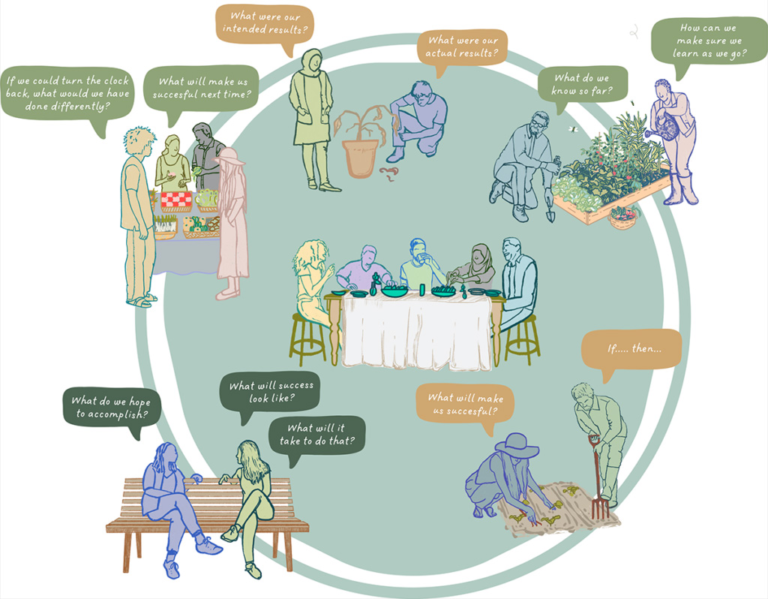At its heart, Emergent Learning is a question/answer dialogue that helps us think and learn together. As such, the power of Emergent Learning rests in the kinds of questions we ask and when we ask them. All Emergent Learning practices rely on asking questions — BARs and AARs, EL Tables, Learning Agendas. But Emergent Learning doesn’t just happen in official “learning events.” Each question in these larger practices can be asked powerfully on its own, at the right moment in time, to open up our collective thinking and learning.

The most powerful learning moments actually happen as groups go about their work — making decisions, working with partners, asking team members to complete a task, or making meaning of data. In many teams, it can be difficult to get people to pause before they make a decision to do an EL Table to think about what they know so far, or to take the time to do an official AAR to learn from what they’ve just done before they are on to the next action. Just asking a question can be a first step in shifting the team’s learning culture. “Before we launch in, let’s remind ourselves: What will success look like?”
Drawing on EL questions and learning when to ask them helps practitioners make a greater difference in a team’s learning culture. Building the skill to ask the right question at the right moment also helps a team build its own learning muscle, so that it becomes someone other than the person “responsible” for learning who asks: What are we really trying to accomplish here? What have we learned in the past that might help us here?
What are Framing Questions?
Framing Questions are one form of Emergent Learning question that are worth exploring in more detail. More than anything else, a Framing Question is an invitation to everyone at the table to think and learn together. “What will it take to achieve this result we care about?”
A Framing Question translates a learning priority (a goal, a challenge, an opportunity, or a hypothesis) into a question that focuses our attention on a larger shared vision as we work — both about the immediate opportunity in front of us and, more important, over time. It asks us to think together about how we can tackle a specific and immediate challenge. For example, “What will it take to close the books on our accounting on time this quarter?” Or it invites us to think about what it will take to achieve a desired outcome or future state. For example, “How can we double the number of households in our community that have an emergency preparedness plan in place?”
While it may seem like a minor tweak, there is a very important felt difference between bringing people together to talk about the importance of being transparent and responsive in grant relationships (one of the practices of Trust-Based Philanthropy) and bringing people together around the question: “What will it take for us to be more transparent and responsive in our grant relationships?”
Framing Questions also inspire learning across teams, organizations, and even communities or geographies. They invite people to bring their different experiences and perspectives to learning as a community. The most powerful Framing Questions engage our sustained curiosity, so that we can’t help but want to experiment and learn. Framing Questions can be nested, so that the broad question leads to the next level question, leads all the way down to “what will it take to make progress in our next meeting?”